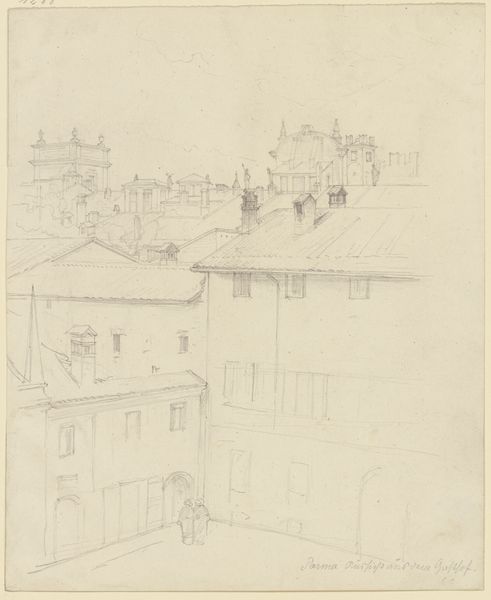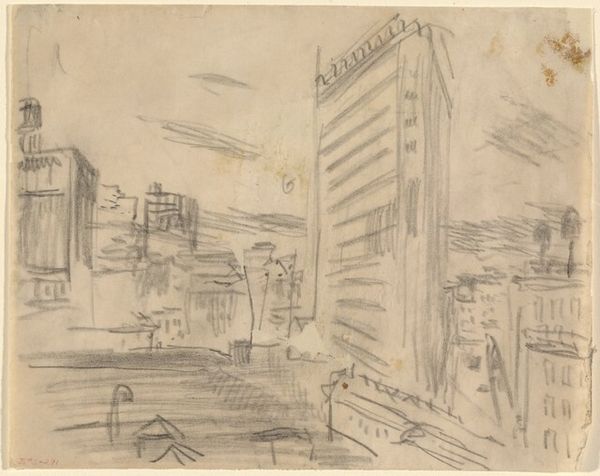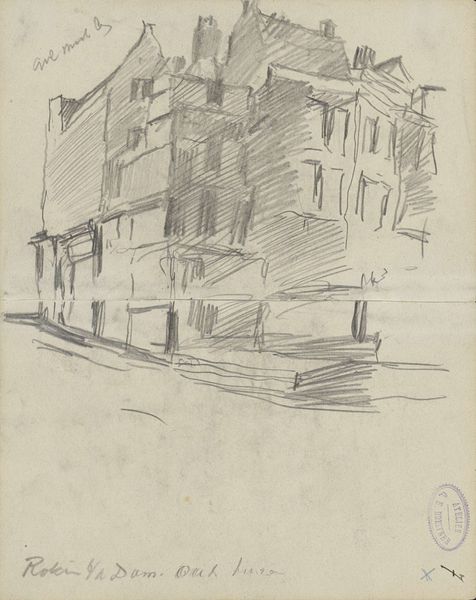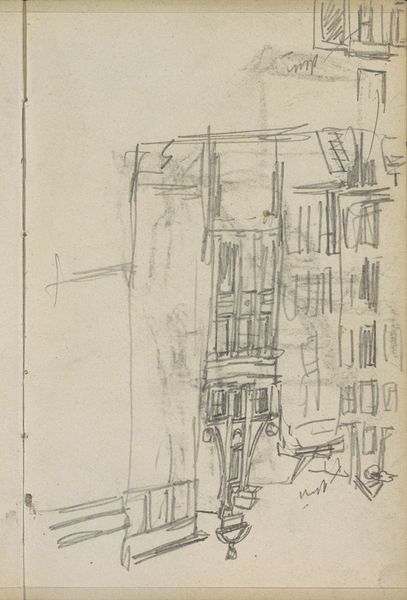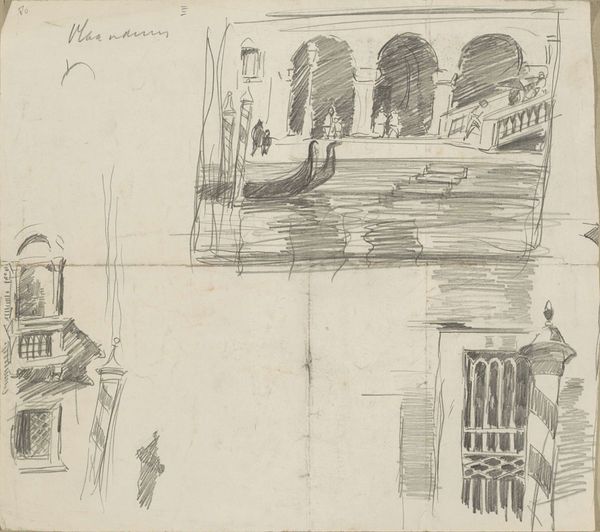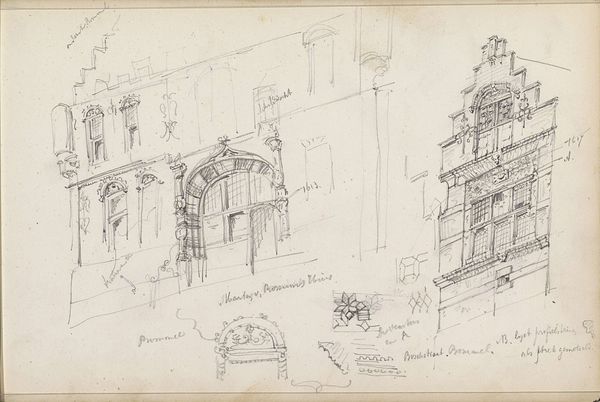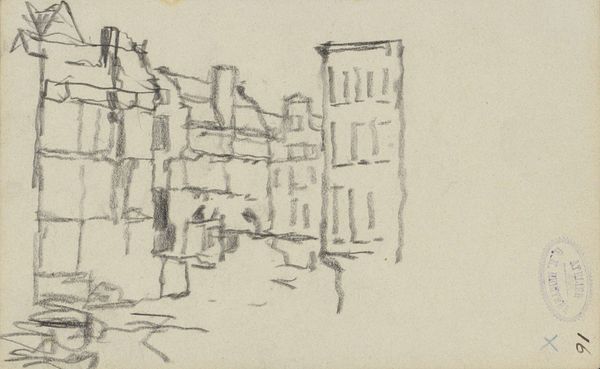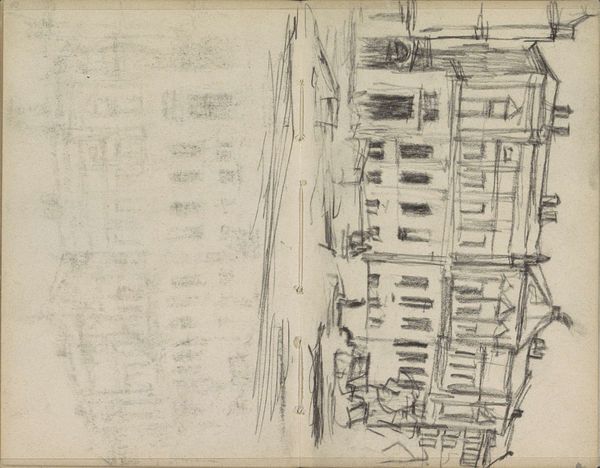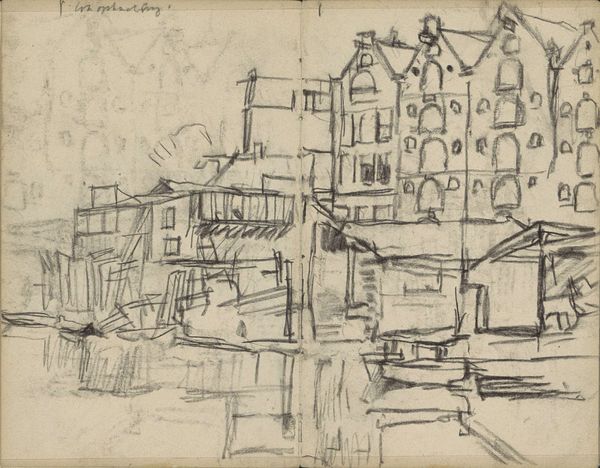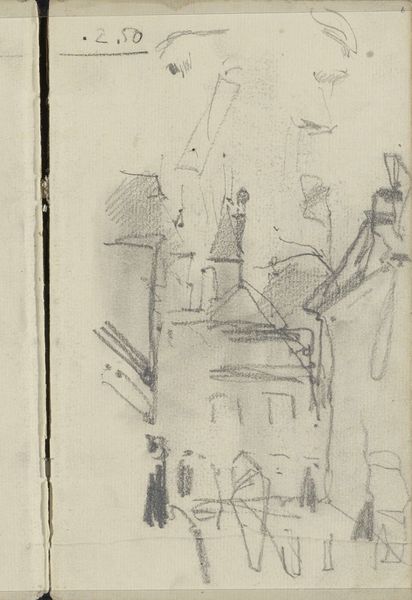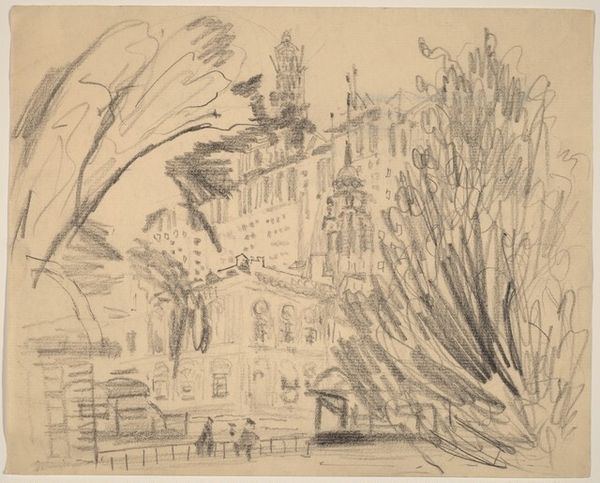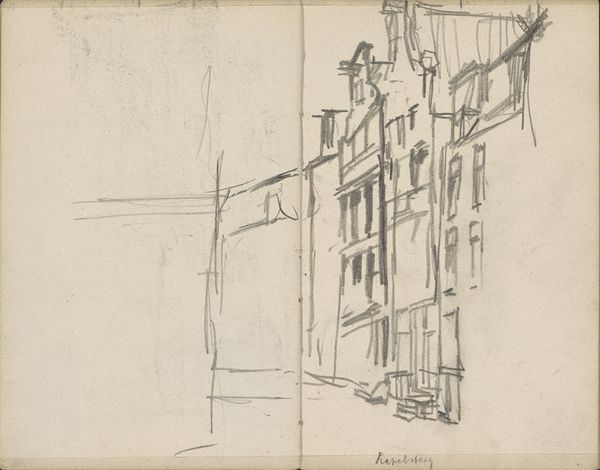
drawing, pencil
#
drawing
#
geometric
#
pencil
#
ashcan-school
#
cityscape
Dimensions: overall (approximate): 20.2 x 25.3 cm (7 15/16 x 9 15/16 in.)
Copyright: National Gallery of Art: CC0 1.0
Curator: This evocative pencil drawing, dating back to approximately 1922, is John Sloan's "The City from Greenwich Village." Editor: My initial reaction is its remarkable geometric simplicity. There's a real architectural quality; the stark lines of the buildings feel very deliberate. It conveys a sense of imposing structure. Curator: Indeed, that geometrical structure is key. Notice how Sloan frames urban existence; its geometry subtly influences how inhabitants perceive their place within its cultural matrix, imposing boundaries as it guides flows. The image is part of the Ashcan School, which strove to portray urban reality. Editor: Right, you can really sense the 'Ashcan' grit. The texture of the pencil creates such atmospheric density—there's an implied haze, or even a sort of built-up grime suggested in those tones. Structurally, look at the rhythmic interplay between verticals and horizontals; they organize the surface beautifully, yet never feel cold. Curator: That ‘gritty’ urban scene holds inherent symbols and meanings. A dense building might signal upward aspirations but also convey societal restrictions, class segregation. See the lines implying street activity? It echoes bustling, rapidly changing life, or anxieties amid this swiftness. Sloan captures both vitality and potential social anxieties brewing within that specific cultural epoch. Editor: And speaking formally, the high vantage point allows the viewer to observe the urban fabric from a removed, objective perspective, like an observing eye hovering above the cityscape. Its very deliberate compositional choice encourages reflection upon both isolation amid teeming urban sprawl plus geometric rigor underpinning lived existence. Curator: Agreed. That detached point reflects how individuals perceive—and sometimes get lost in—vast and complex settings like those in growing metropolises, especially significant during modernity’s proliferation when tradition lost dominance… Did artists then depict reality from detached vantage out of objectivity or displacement? Perhaps both were inherent within change during those transitional eras. Editor: I find that so suggestive. I'm left reflecting on the piece's clever distillation, that structural bareness expressing so richly both social plus experiential phenomena within an age increasingly abstracted via urbanization itself. Curator: I echo your thought. I walk away from John Sloan’s cityscape appreciating the many meanings drawn within such simple lines of architectural imagery – reflecting deep insights regarding culture undergoing transformations—caught just behind their rigid faces!
Comments
No comments
Be the first to comment and join the conversation on the ultimate creative platform.
